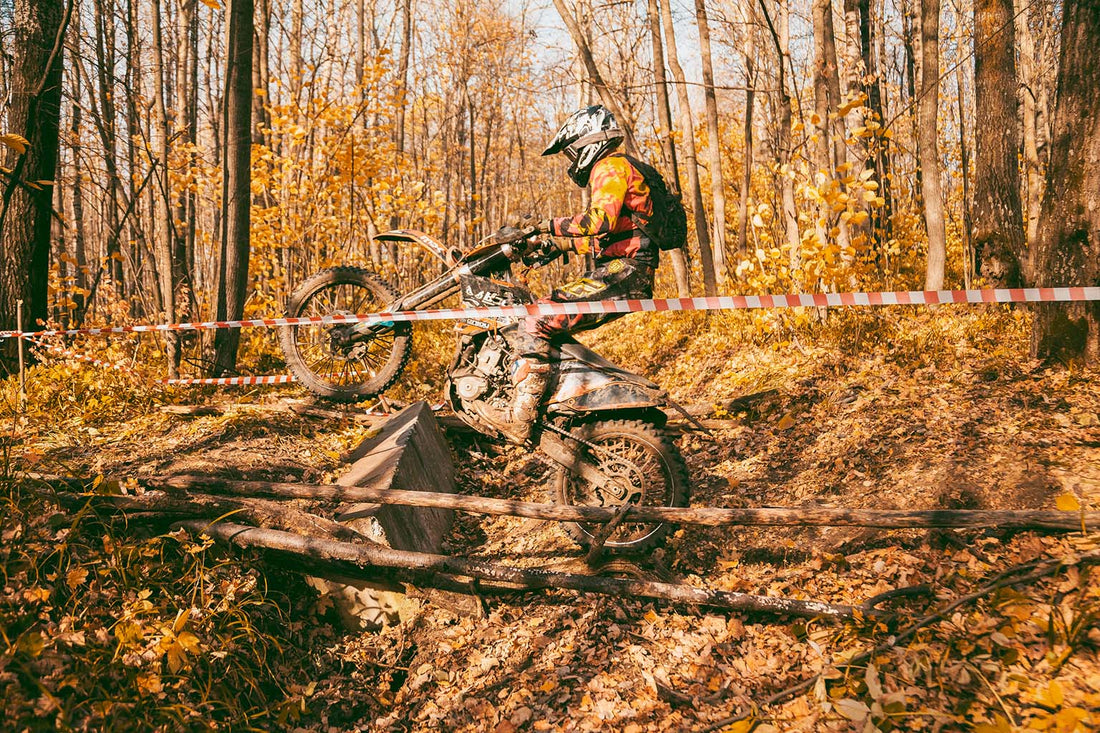
Aluminum vs Carbon vs Plastic (HDPE) Skid Plate for Enduro Motorcycles - Which is Better?
Share
When it comes to protecting your enduro motorcycle's undercarriage, choosing the right skid plate is crucial. Enduro riding often involves navigating rough terrains, rocky trails, and unpredictable obstacles, making skid plates an essential component for safeguarding your bike's engine and frame. The three most popular materials for skid plates are aluminum, carbon fiber, and plastic (specifically HDPE polyethylene). Each material has its own set of advantages and disadvantages. In this article, we’ll break down the pros and cons of each to help you decide which is best for your riding needs.
Content
- Aluminum Skid Plates
- Carbon Fiber Skid Plates
- Plastic (HDPE) Skid Plates
- Comparison Table: Aluminum vs Carbon vs Plastic (UHMW)
- Which is Better?
- Conclusion
1. Aluminum Skid Plates
Overview:
Aluminum skid plates are one of the most common choices for enduro riders. They are known for their durability and ability to withstand heavy impacts.

Pros:
- Durability: Aluminum is highly resistant to dents and abrasions, making it ideal for rocky and rugged terrains.
- Impact Resistance: It provides excellent protection against large rocks and sharp obstacles.
- Heat Dissipation: Aluminum can help dissipate heat from the engine, which is beneficial during long rides.
- Custom Fit: Many aluminum skid plates are designed to fit specific motorcycle models, ensuring optimal coverage.
Cons:
- Weight: Aluminum is heavier than carbon fiber and plastic, which can add extra weight to your bike.
- Noise: Metal skid plates can produce more noise as debris and rocks hit the surface.
- Corrosion: While aluminum is corrosion-resistant, it can still oxidize over time, especially in wet or muddy conditions.
Best For:
Riders who prioritize maximum protection and are willing to accept the added weight. Good choice for touring enduro motorcycles like an Africa Twin, Yamaha Tenere etc.
2. Carbon Fiber Skid Plates
Overview:
Carbon fiber skid plates are a premium option, offering a blend of strength and lightweight performance.
Pros:
- Lightweight: Carbon fiber is significantly lighter than aluminum, reducing overall bike weight.
- Strength: Despite being lightweight, carbon fiber is incredibly strong and can handle significant impacts.
- Aesthetic Appeal: Carbon fiber has a sleek, modern look that many riders find appealing.
- Vibration Dampening: Carbon fiber can absorb vibrations better than aluminum, providing a smoother ride.
Cons:
- Cost: Carbon fiber skid plates are the most expensive option on the market.
- Brittleness: While strong, carbon fiber can crack or shatter under extreme impacts, unlike aluminum which may dent instead.
- Limited Availability: Fewer manufacturers produce carbon fiber skid plates, so options may be limited.
Best For:
Riders who want a lightweight, high-performance option and are willing to invest in premium protection.
3. Plastic (HDPE) Skid Plates
Overview:
Plastic skid plates, typically made from High Density Polyethylene (HDPE), are a popular choice for their lightweight and flexible properties.

Pros:
- Lightweight: HDPE plastic is lighter than aluminum (about 40% less), making it a good option for weight-conscious riders.
- Quiet: Plastic skid plates produce less noise when rocks and debris hit them compared to metal options. Does not create resonance or vibration.
- Flexibility: HDPE plastic can flex upon impact, reducing the risk of cracking or breaking.
- Corrosion Resistance: Unlike metal, plastic does not rust or corrode, making it ideal for wet or muddy conditions.
- Custom Fit: Plastic Bash Plates are designed to fit specific motorcycle models, ensuring optimal coverage.
- Impact Resistance: plastic Bash Plates absorbs shock better than aluminum or carbon
Cons:
- Heat Retention: Plastic does not dissipate heat as effectively as aluminum, which could be a concern for long rides.
Best For:
Riders who prioritize weight savings and noise reduction, and who ride in extreme conditions. Good choice for hard enduro motorcycles land dirt bikes.
4. Comparison Table: Aluminum vs Carbon vs Plastic (HDPE)
| Feature | Aluminum | Carbon Fiber | Plastic (HDPE) |
|---|---|---|---|
| Weight | Heavy | Light | Light |
| Durability | High | High | High |
| Impact Resistance | Excellent | Excellent | Excellent |
| Noise Level | High | Moderate | Low |
| Cost | Moderate | High | Low |
| Corrosion Resistance | Moderate | High | High |
| Heat Dissipation | Good | Moderate | Poor |
5. Which is Better?
The "best" skid plate material depends on your specific riding style, terrain, and budget:
-
Choose Aluminum if you need maximum protection and durability for extreme off-road conditions, and don’t mind the extra weight.
- Choose Carbon Fiber if you want a lightweight, high-performance option and are willing to pay a premium for it.
- Choose Plastic (HDPE) if you prioritize weight savings, noise reduction, and cost-effectiveness, and ride in extreme environments.
6. Conclusion
Ultimately, the choice between aluminum, carbon fiber, and plastic skid plates comes down to your individual needs as a rider and depends on type of your motorcycle. Aluminum offers unmatched durability, carbon fiber provides a lightweight and strong alternative, and plastic (HDPE) delivers a cost-effective and quiet solution. Consider the type of terrain you ride, your budget, and your performance priorities to make the best decision for your enduro motorcycle.
Plastic Skid plates (or Bash Plates) presented in our online store have excellent characteristics and are made for the individual design of each motorcycle model.

1 comment
honestly, for the price, UHMW is a fantastic option. I’ve been using one for two seasons now, and it’s held up surprisingly well. Sure, it’s got some scratches and dings, but it’s still doing its job.